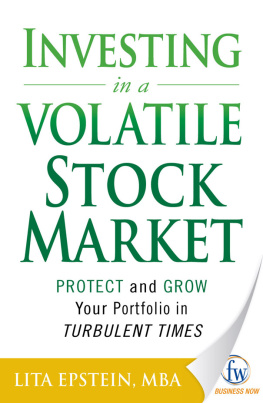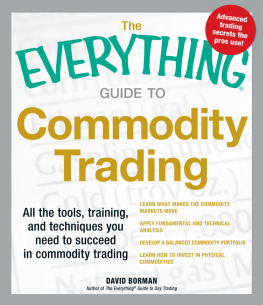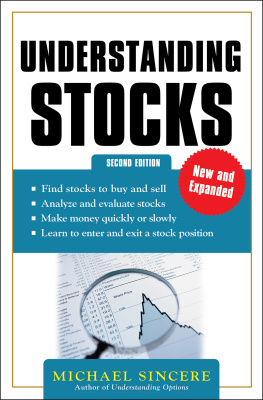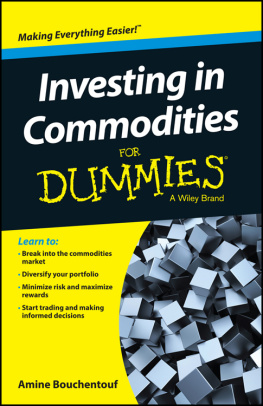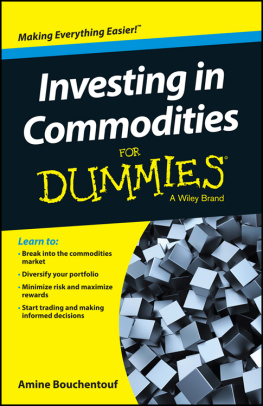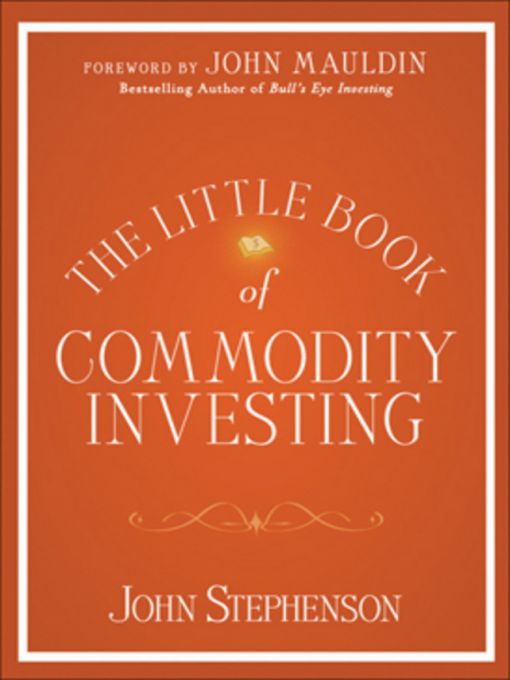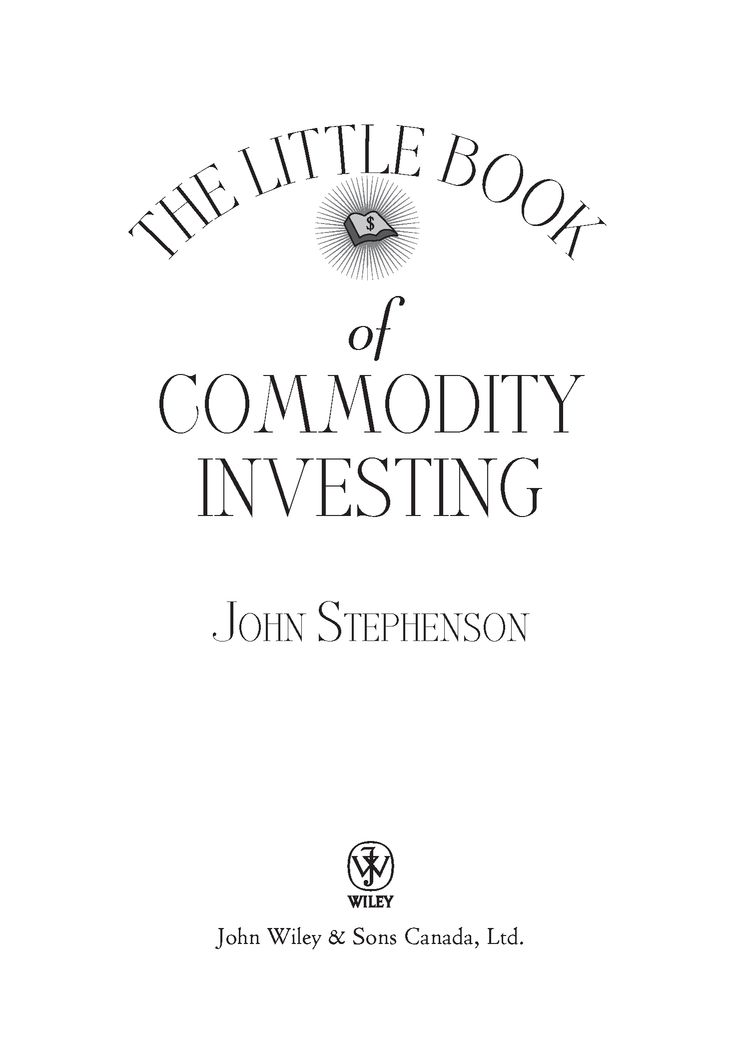Table of Contents
Little Book Big Profits Series
In the Little Book Big Profits series, the brightest icons in the financial world write on topics that range from tried-and-true investment strategies to tomorrows new trends. Each book offers a unique perspective on investing, allowing the reader to pick and choose from the very best in investment advice today.
Books in the Little Book Big Profits series include:
The Little Book That Beats the Market by Joel Greenblatt
The Little Book of Value Investing by Christopher Browne
The Little Book of Common Sense Investing by John C. Bogle
The Little Book That Makes You Rich by Louis Navellier
The Little Book That Builds Wealth by Pat Dorsey
The Little Book That Saves Your Assets by David M. Darst
The Little Book of Bull Moves in Bear Markets by Peter D. Schiff
The Little Book of Main Street Money by Jonathan Clements
The Little Book of Safe Money by Jason Zweig
The Little Book of Behavioral Investing by James Montier
The Little Book of Big Dividends by Charles B. Carlson
The Little Book of Investing Dos and Donts by Ben Stein and Phil DeMuth
The Little Book of Bull Moves, Updated and Expanded by Peter D. Schiff
The Little Book of Commodity Investing by John Stephenson
Foreword
PLANNING FOR THE END GAME. May you live in interesting times was supposedly an ancient Chinese curse. Historians really only write about the great events, usually disasters and wars, as there is not much of interest in peaceful, serene times. So, if the period you live in is interesting, it is probably not serene; volatility and the unknown become a part of the fabric of life.
Unfortunately, as far as investing is concerned, we live in very interesting times. As I write this foreword, we have just come through the worst financial crisis and most serious recession since the Great Depression. It appears that the economies are recovering in the United States and Asia, but there are rumblings that things might not be so good in the Eurozone. Many of its economies are in recessions, ranging from mild to severe, and the credibility of the sovereign debt of the Club Med countries is in doubt.
Indeed, just as we lurched from one bubble to another over the past decade, we are rapidly approaching the bursting of the next bubblethat of sovereign debt. While consumers and businesses are retrenching and the world of private debt is involved in the Great Deleveraging, governments around the world are running massive deficits as they try to stimulate their economies in the face of unemployment and slack demand. But there is a limit to the amount of money they can borrow and to the interest rates they will be able to pay, as the turmoil in Greece and the rest of the Mediterranean demonstrates. Even Japan will find there is a limit.
And we are rapidly approaching that limit. As investors, we must now contemplate The End Game. What will the investment climate be when the developed world is forced to deleverage? For some countries, it will be deflation. For others, it will be inflation. You can count on major currency fluctuations. Recessions will come more often and be more persistent. Unemployment will remain uncomfortably high. Interest rates? Expect them to be low until markets lose confidence in the ability of a government to repay its debt.
As Reinhart and Rogoff wrote: Highly indebted governments, banks, or corporations can seem to be merrily rolling along for an extended period, when bang!confidence collapses, lenders disappear, and a crisis hits.
Bang is the right word. It is the nature of human beings to assume that the current trend will work out, that things cant really be as bad as they seem. Compare how the bond markets looked only a year ago with how they looked just a few months before World War I. There was no sign of an impending war. Everyone thought that cooler heads would prevail. In a similar vein, just prior to the recent credit crisis, bond markets (and indeed all other markets) around the world were not signaling that the worst credit crisis in 70 years was about to emerge. And then overnight, so it seemed, the banking markets collapsed. Bang, indeed.
We can look back now and see where we made mistakes in the current crisis. We actually believed that this time was different, that we had better financial instruments, smarter regulators, and that we were so, well, modern. Times were different. We knew how to deal with leverage. Borrowing against your home was a good thing. Housing values would always go up, and so on.
Now, there are voices telling us that things are headed back to normal. Mainstream forecasts for GDP growth this year are quite robust, north of 4 percent for the year, based on evidence from past recoveries. However, the underlying fundamentals of a banking crisis are far different from those of a business-cycle recession. It typically takes years to work off excess leverage in a banking crisis, with unemployment often rising for four years running.
So, John, this is all very interesting, but what does it have to do with a book on commodities? Everything.
We have just gone through a lost decade for the stock markets in the United States and much of the developed world. What worked for so many years no longer does, yet many investors persist on putting the bulk of their assets in equities. The environment I have described above is one in which equities and index funds (which are the main way investors invest in equities) will struggle, offering nowhere near the touted long-term averages.
Indeed, if you went back to 1966 and invested in 20-year U.S. government bonds, your bond portfolio would have outperformed the stock market over the next 43 years through the end of 2009. Stocks for the long run, indeed.
What that says to me is that investors should look for ways to diversify their portfolios away from the current over-allocation to stocks. And one way to do that is through commodity investing. But simply buying a fund tied to some commodity aggregate index isnt the answer. And thats where this book by John Stephenson will be so useful.
To be a successful commodity investor takes knowledgeas much knowledge as (or even more than) it takes to be a successful stock investor. While a pound of aluminum, iron, or nickel is the same anywhere, the price can change based upon demand. The price of a bushel of corn reflects not only the demand for tortillas, but also the demand for ethanol. And everything is complicated by the world economy, because a growing Asia will need more energy and food, even as the developed world struggles to find that same growth. Which factors will have more influence?
Once you have made the decision about price direction, there are many ways to invest in commodities. Stephenson helps you work through the pitfalls and advantages of various funds and styles.
While I think the developed world is in for a Muddle-Through Economy, there are so many ways that individual investors can prospereven in a sideways world. They need only to look beyond the traditional portfolio and explore the rest of the investment cornucopia. Volatility and nimbleness will bring you opportunity.


